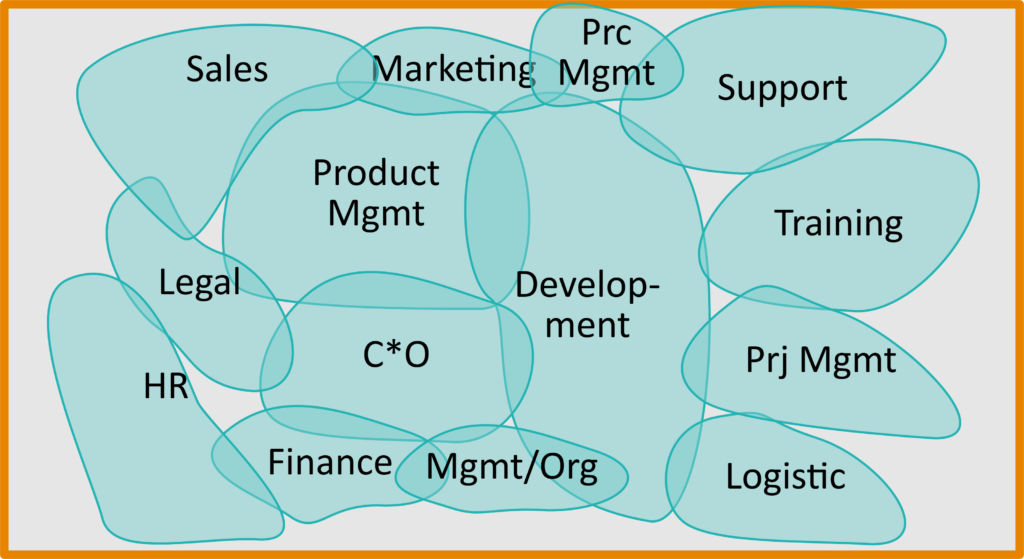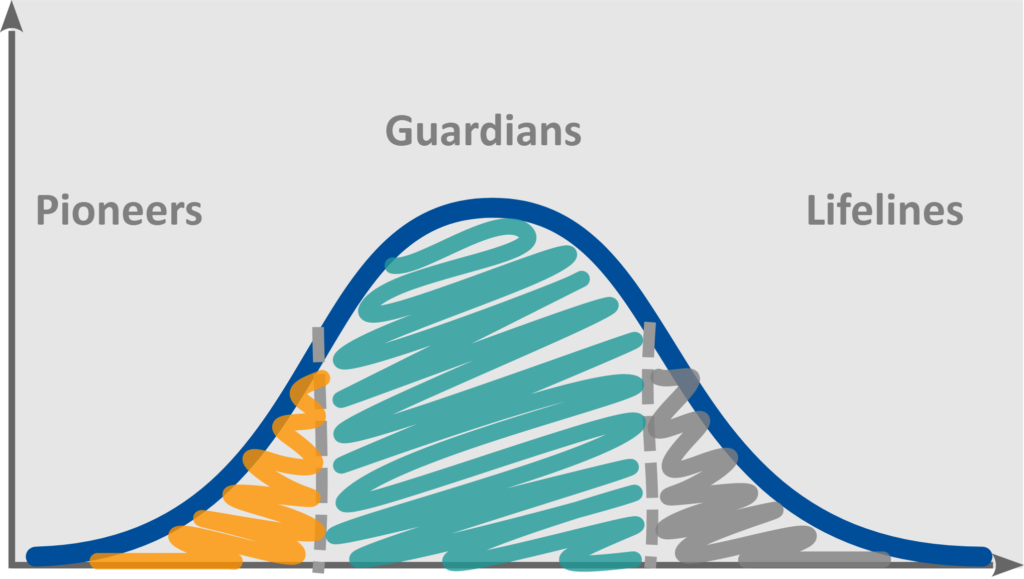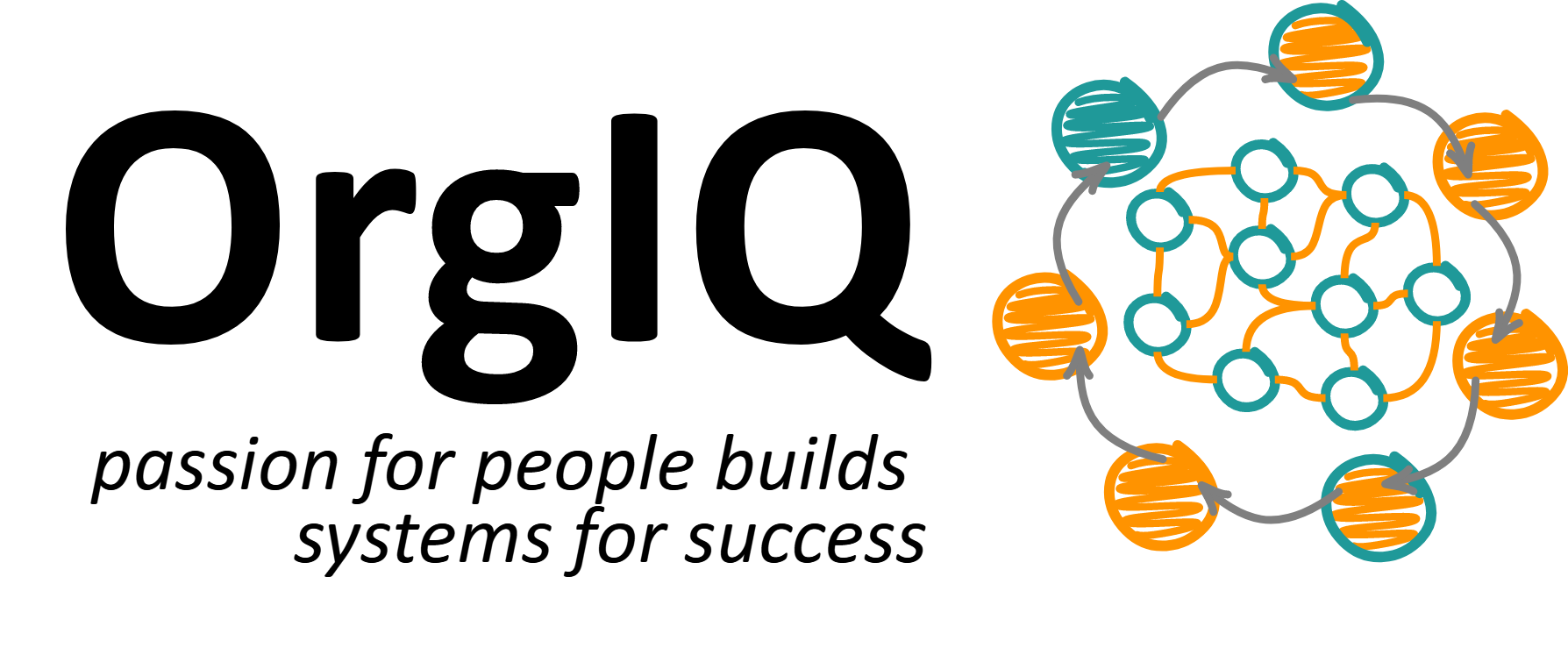We know different kind of changes. How they work. Which levels of humanity they affect.
We all know the three ways to influence others or change behavior: pressure, bribery or inspiration. We know this since being kids.
Pressure: “brush your teeth otherwise xyz happens”. Xyz will be never something pleasurable. It will be pain by creating directly some sort of pain or by withdrawal of something we like.
Bribery: “brush your teeth and you get the chocolate”. It will often work and we will get the action, but we may loose the big picture. And it will condition the people to get something. Always. And always more.

If the people don’t like change, it’s just a symptom of mistrust.
They don’t believe we act in their best interest.
And they don’t believe – most of the time rightful – we understand their job.
The reasons for resentments concerning change are misused power, destroying trust, and arrogance. And the arrogance is a property of the broken system. It’s the effect of a misunderstanding.

Inspiration and persuasion: “you see this new amazing StarWars teeth-brushing robot, just stick it in your mouth and it will do the rest”.
We hear often the saying “the only humans that want change is a baby in wet diapers”. This is not true.
People want change and sometimes even crave change. But people need to understand what will happen and people must belief from the heart that it is in their interest.
Nobody fears change, when they trust and know it’s beneficial for them. In a safe space we even accept change, which is good for the system and has no direct benefit for us. And this is the direct implementation of the vision of the intelligent organization from the beginning.
And here we come back to the safe space-system idea. In systems that lack trust, we see only pressure and bribery as mechanisms to influence (manipulate) others.
Which are short term successful, but long-term expensive and worthless approaches. Basically I have to permanently monitor and increase pressure and bribery for every single action. It’s control in its finest. It works, but costs a huge amount of money.
Nobody likes it, and this causes a number of side effects. High staff turnover, health issues, politics.
It is easy to find organizations – huge and successful organizations – where just 20-30% of the effort are really going to the customer.
Actually it’s normal that most of the effort is wasted internally. To keep myself safe, in a variety of ways. This is costly and endangers the survival of the system. Not intelligent.
The need for change comes from the difference between reality and perception. The power of change comes from the crises.

The core model we use is based on Virginia Satir, which is here the orange line. We added the teal line, to show the “reality”, whatever this is.
The biggest problem humans have, is that we don’t perceive reality, but create it. We think our perception is true, even if it was filtered through many layers.

One tool to adapt continuously to changing “reality” is to use as many perspectives inside the system as possible. In the Clockwork we have the assumption that the top sees all. But relying on system theory and psychology this is not true, and just a normal bias. Everyone of us has just a personal perspective. And using the Clockwork-Model we can think about milieus. And none of them is right or wrong, it just has a different perspective and contribution to our shared purpose. Therefore, we need to see, hear, and understand all of us.

OrgIQ is about applying principles of healthy growth. We respect and valuate the way humans are build. The neuronal, social, and psychological structure.
Natural change is a form of growth. I don’t force plants to grow. I even can’t do it, if I want.
Humans are a bit more complicated. We can fake everything, when we are forced. But then we loose the connection between us.
Following our true selves, we can even “manage” the deepest transformations. And the cost is lower then ever before.

How does we react on change? The simple answer is: “different”. Depending on our role in the social system, we will drive the change (pioneers), we will evaluate the change (guardians), or we will resist the change (lifelines).

In the Clockwork-Model most of the time we are unfair to every group. But especially the pioneers and the lifelines are “always wrong”. And maybe the biggest change we need in our perspective is, how we see their roles in our system. How we see the logic and survival of our system. How we see the mechanics that keep the population of our system alive.
We will see that we need all of them. And we never now in advance, which day we need which group most.
Sure, on the daily basis, we only need the guardians. They are the core of the Clockwork. If everything works perfectly and there would be no change or danger, the guardians would be doing all the work and that’s it. But life is seldom this safe and stable. Therefore, nature implemented some useful tools in every natural system, to keep the populations alive in challenging times.
Pioneers will drive change. They will continuously look for new places and chances that we as a system can grow and find new habitats. They will check the reality against the perception of the system and will try to adapt. But they also are willing to take risks.
They are willing to sacrifice themselves during the quest of finding new habitats.
This is why we need the guardians. They are the first safety net. They look at the pioneers and will evaluate if it’s safe and beneficial, what they are doing. After some time, they will accept the change and apply it also, or they will reject it.
But sometimes even the guardians are failing. They adapt to the change, and suddenly something unexpected happens, and whatever the pioneers tries, and the guardians followed, doesn’t work. In former times, all of them would just plainly die.
And here we come to the lifelines. In these rare cases, they are the backup. They keep the population alive. And it will take a few generations, until we have our distribution between all roles back.
Basically all groups need to be big enough, to ensure the survival of the population. The scenario for the lifelines we discussed already. But the same can happen with the pioneers. If the guardians and the lifelines hesitate too long, the pioneers will be the only ones that survive a dramatic change.
And the best way to keep the system stable and aligned is that these three groups talk consciously with each other and listen to each other.

It’s useful, when we understand, which of our actions address which level. We have here a simplified model, which should be useful enough. When we apply pressure or manipulation (bribery), we will reach only the teal part.
We loose the people, but get a (fake) respond and change.
Inspiration, which rely on a trustworthy relationship, connects to our emotional core. Inspiration will help us to change on the human level.
For too long we where satisfied with the fake responds, which are variants of fight, flight, freeze, or fawn.
For more on change see also our WhitePaper.
